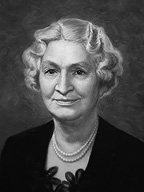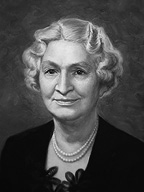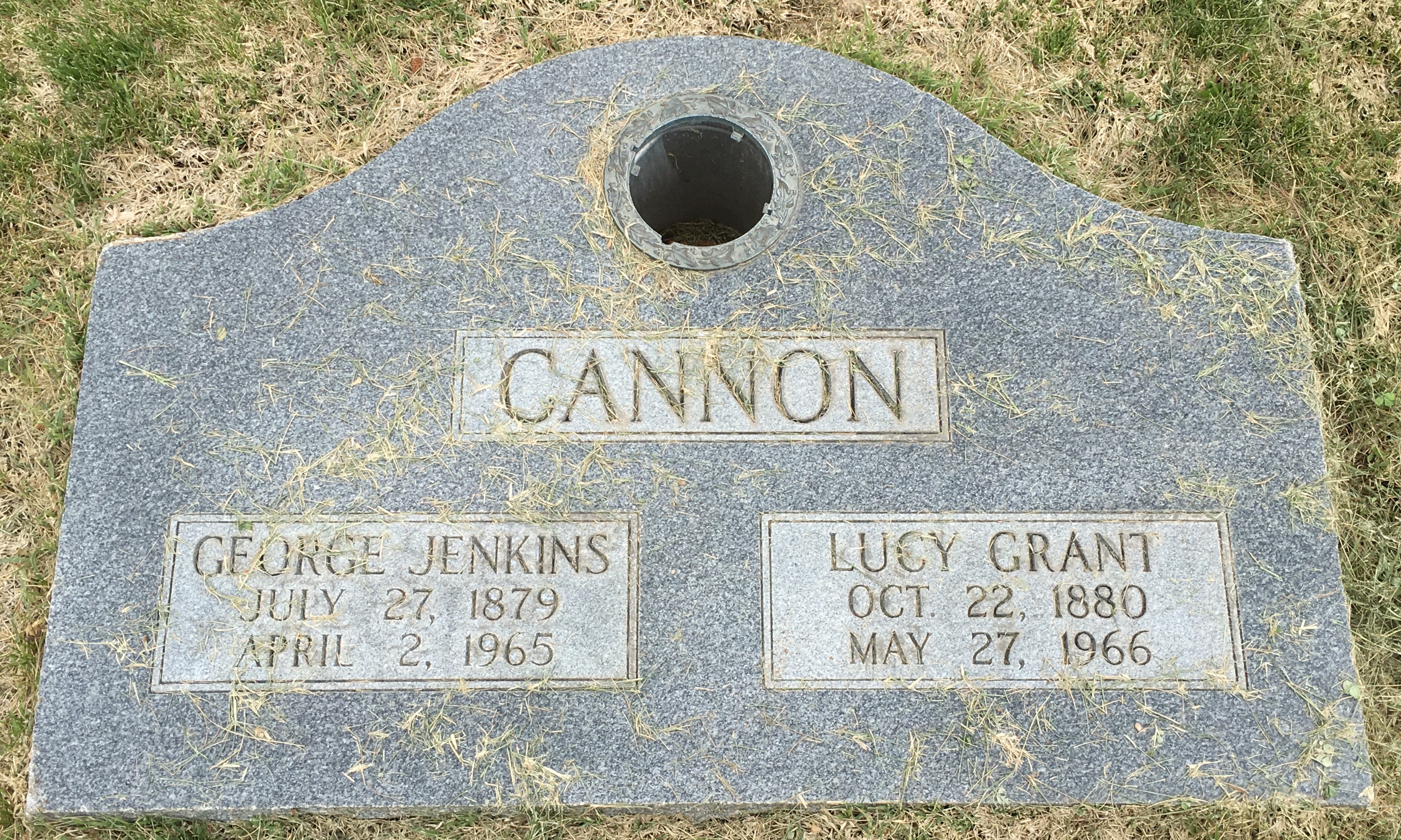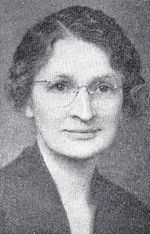Married George Jenkins Cannon, 26 Jun 1902, Salt Lake City, Salt Lake, Utah
Children - Rachel Cannon, Irene Cannon, Florence Cannon, Jean Cannon, George Ivins Cannon, Heber Stanley Cannon
Biography - Lucy was born on October 22, 1880, in Salt Lake City, Utah to Lucy Stringham and Heber J. Grant, who was the seventh president of The Church of Jesus Christ of Latter-day Saints. Her maternal grandfather was one of the first pioneers that entered Utah in 1847. She grew up among six siblings and her father married Augusta Winters and Emily H. Wells who bore him six more children. Lucy served as a missionary in the Western States Mission (1901), and married George J. Cannon in 1902. She gave birth to seven children. One of her sons later became a general authority for the LDS church. She died at the age of 85, on May 7, 1966. (Lucy Grant Cannon, Wikipedia.org).
Lucy experienced grief and loss starting at a young age, when family members passed away. Her mother died in 1893, when Lucy was about 13 years old. Her only brothers died at young ages, including her step-brother Daniel Wells Grant (5 years old) who died in 1895, when Lucy was about 15 years old. In later years, her stepmother Emily died of stomach cancer (1908), her grandmother died (1909), and her step-sister Emily died (1929).
"In times of sickness or death," wrote Lucy Grant Cannon, a daughter of President Heber J. Grant, "father's fortitude has been remarkable. When his son [7-year-old Heber Stringham Grant] was bedridden for over a year, and during the last months of his life so often in very great pain, father would sit by his cot for hours at a time and soothe him. He would be in his room and with him as much as he could, and when he passed away father was resigned to his going although he knew that as far as earthly posterity is concerned he would probably have no son to carry his name. His great faith, which to us has seemed absolute, has been a strength and a stay to us all our lives" ("Chapter 5: Comfort in the Hour of Death," Teachings of Presidents of the Church: Heber J. Grant, 43).
From 1923-1948, Lucy served as a YLMIA counselor to several Mormon women, such as the LDS woman leader Martha H. Tingey (the second young women's president from 1905-1929), Ruth May Fox (the young women's president from 1929-1937), and Clarissa A. Beesley (second counselor). In 1937, Lucy replaced Ruth May Fox as the fourth young women's president and worked with her counselors Helen Spencer Williams (1937-1944), Verna Wright Goddard, and Lucy Taylor Andersen (1944-1948).
During her presidency from 1937-1948, she accomplished a lot and blessed the lives of many Mormon women. During her presidency, she organized the Golden Gleaner awards, Sunday evening firesides (1940), the Big Sister program (1944) for young women and mothers who needed work during the war), and "100th anniversary celebration of pioneers entering Salt Lake Valley observed by YWMIA members through festivals, music, parades, and square dancing" in 1947. She introduced the symbols of the beehive, rose, and sheaf and split young women into classes, based upon their age, which are known today known as the Beehives class (ages 12-13), Mia Maids class (ages 14-15), and Laurels class (ages 16-18) (Young Women, Lucy Grant Cannon).
In 1937 Lucy Grant Cannon became president of the YWMIA. She organized the youth according to age and interest, with special manuals, incentive programs, and symbols that fostered development and recreation for all girls twelve years of age and over. She introduced an annual theme to be memorized and recited at every MIA meeting throughout the world. For example, in 1941 the theme was, "I, the Lord, am bound when ye do what I say; but when ye do not what I say, ye have no promise" (Doctrine and Covenants 82:10). Manuals were written in Salt Lake City but adapted to the needs and customs of non-English speaking members of the Church.
Married George Jenkins Cannon, 26 Jun 1902, Salt Lake City, Salt Lake, Utah
Children - Rachel Cannon, Irene Cannon, Florence Cannon, Jean Cannon, George Ivins Cannon, Heber Stanley Cannon
Biography - Lucy was born on October 22, 1880, in Salt Lake City, Utah to Lucy Stringham and Heber J. Grant, who was the seventh president of The Church of Jesus Christ of Latter-day Saints. Her maternal grandfather was one of the first pioneers that entered Utah in 1847. She grew up among six siblings and her father married Augusta Winters and Emily H. Wells who bore him six more children. Lucy served as a missionary in the Western States Mission (1901), and married George J. Cannon in 1902. She gave birth to seven children. One of her sons later became a general authority for the LDS church. She died at the age of 85, on May 7, 1966. (Lucy Grant Cannon, Wikipedia.org).
Lucy experienced grief and loss starting at a young age, when family members passed away. Her mother died in 1893, when Lucy was about 13 years old. Her only brothers died at young ages, including her step-brother Daniel Wells Grant (5 years old) who died in 1895, when Lucy was about 15 years old. In later years, her stepmother Emily died of stomach cancer (1908), her grandmother died (1909), and her step-sister Emily died (1929).
"In times of sickness or death," wrote Lucy Grant Cannon, a daughter of President Heber J. Grant, "father's fortitude has been remarkable. When his son [7-year-old Heber Stringham Grant] was bedridden for over a year, and during the last months of his life so often in very great pain, father would sit by his cot for hours at a time and soothe him. He would be in his room and with him as much as he could, and when he passed away father was resigned to his going although he knew that as far as earthly posterity is concerned he would probably have no son to carry his name. His great faith, which to us has seemed absolute, has been a strength and a stay to us all our lives" ("Chapter 5: Comfort in the Hour of Death," Teachings of Presidents of the Church: Heber J. Grant, 43).
From 1923-1948, Lucy served as a YLMIA counselor to several Mormon women, such as the LDS woman leader Martha H. Tingey (the second young women's president from 1905-1929), Ruth May Fox (the young women's president from 1929-1937), and Clarissa A. Beesley (second counselor). In 1937, Lucy replaced Ruth May Fox as the fourth young women's president and worked with her counselors Helen Spencer Williams (1937-1944), Verna Wright Goddard, and Lucy Taylor Andersen (1944-1948).
During her presidency from 1937-1948, she accomplished a lot and blessed the lives of many Mormon women. During her presidency, she organized the Golden Gleaner awards, Sunday evening firesides (1940), the Big Sister program (1944) for young women and mothers who needed work during the war), and "100th anniversary celebration of pioneers entering Salt Lake Valley observed by YWMIA members through festivals, music, parades, and square dancing" in 1947. She introduced the symbols of the beehive, rose, and sheaf and split young women into classes, based upon their age, which are known today known as the Beehives class (ages 12-13), Mia Maids class (ages 14-15), and Laurels class (ages 16-18) (Young Women, Lucy Grant Cannon).
In 1937 Lucy Grant Cannon became president of the YWMIA. She organized the youth according to age and interest, with special manuals, incentive programs, and symbols that fostered development and recreation for all girls twelve years of age and over. She introduced an annual theme to be memorized and recited at every MIA meeting throughout the world. For example, in 1941 the theme was, "I, the Lord, am bound when ye do what I say; but when ye do not what I say, ye have no promise" (Doctrine and Covenants 82:10). Manuals were written in Salt Lake City but adapted to the needs and customs of non-English speaking members of the Church.
Family Members
Sponsored by Ancestry
Advertisement
Explore more
Sponsored by Ancestry
Advertisement


























